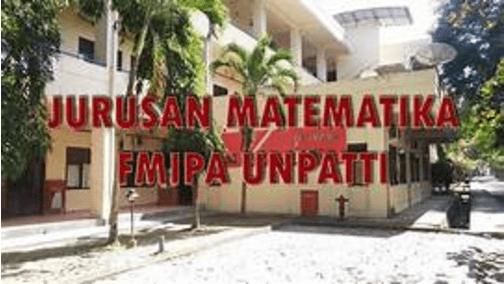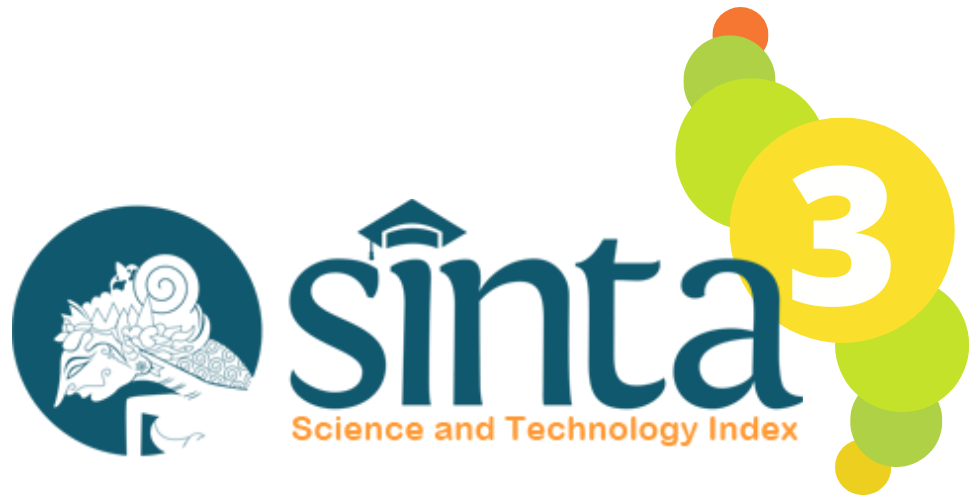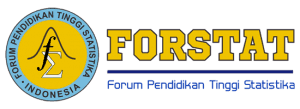PREDIKSI RATA-RATA KELEMBAPAN MENGGUNAKAN METODE SARIMAX DENGAN RATA-RATA TEMPERATUR SEBAGAI VARIABEL EXOGENOUS
Abstract
Rata-rata kelembapandi Indonesia memiliki variansi yang bergantung pada lokasi dan musim. Kelembapanjuga bisa bervariasisepanjang hari, dengan puncak kelembapanbiasanya terjadi pada pagi hari dan menurun pada siang hari sebelum meningkat kembali pada malam hari. Penelitian ini bertujuan untuk memprediksi rata-rata kelembapan di Stasiun Klimatologi Jawa Tengah dengan menggunakan metode SARIMAX (Seasonal Autoregressive Integrated Moving Average with ExogenousVariables).Metode SARIMAX dipilih karena memiliki kemampuan dalammenangani data time series yang memliki komponen musiman dan melibatkan variabel exogenous. Rata-rata temperature digunakan sebagai variabel exogenouskarena adanya korelasi yang signifikan antara rata-rata temperature danrata-ratakelembapan. Data rata-rata kelembapandan temperature diambil dari catatan harian pada periode yang digunakan dalam penelitian. Model SARIMAX kemudian dikembangkan dengan parameter yang dioptimalkan melalui proses iteratif untuk mencapaitingkat akurasi prediksi yang maksimal. Hasil penelitian menunjukkan bahwa model SARIMAX (1, 1, 1)(1, 1, 1)4 dengan nilai AIC sebesar 323,89dan nilai MAPE sebesar 2,863913mampu memberikan prediksi yang cukup akurat terhadap rata-rata Kelembapandi Stasiun Klimatologi Jawa Tengah,denganerror prediksi paling rendah. Model ini dapat memprediksi rata-rata kelembapan selama 8 hari kedepan. Temuan ini dapat membantu dalam perencanaan dan pengelolaan berbagai sektor kegiatan di wiliyah tersebut.
Downloads
References
DAFTAR PUSTAKA
M. H. Mukron, “Peramalan Curah Hujan di Stasiun Meteorologi Klimatologi Geofisika di Jawa Tengah Menggunakan GSTAR Kalman Filter,” 2021, [Online]. Available: http://repository.unimus.ac.id/4817/%0Ahttp://repository.unimus.ac.id/4817/6/12 BAB II.pdf
Aszani, “Penerapan Probabilistic Neural Network(Pnn) Untuk Prakiraan Cuaca Kota Pekanbaru,” no. 2504, pp. 1–9, 2018.
M. Azizah, A. Subiyanto, S. Triutomo, and D. Wahyuni, “Pengaruh Perubahan Iklim Terhadap Bencana Hidrometeorologi di Kecamatan Cisarua - Kabupaten Bogor,” PENDIPA J. Sci. Educ., vol. 6, no. 2, pp. 541–546, 2022, doi: 10.33369/pendipa.6.2.541-546.
S. Prasetyo, Ulil Hidayat, Yosafat Donni Haryanto, and Nelly Florida Riama, “Karakteristik Suhu Udara di Pulau Jawa Kaitannya Dengan Kelembapan Udara, Curah Hujan, SOI, dan DMI,” J. Geogr. Edukasi dan Lingkung., vol. 5, no. 1, pp. 15–26, 2021, doi: 10.22236/jgel.v5i1.5971.
Y. N. I. Fathulrohman and A. Saepuloh, “Alat Monitoring Suhu Dan Kelembaban Menggunakan Arduino Uno,” Jumantaka, vol. 02, no. 1, p. 1, 2018, [Online]. Available: https://jurnal.stmik-dci.ac.id/index.php/jumantaka/article/view/361
R. M. Abdurrohman, “Prototipe Monitoring Suhu Dan Kelembapan Secara Realtime,” J. ICTEE, vol. 4, no. 2, p. 29, 2023, doi: 10.33365/jictee.v4i2.3158.
Y. Novianto and Y. Nataliani, “Peramalan Curah Hujan dengan Pengelompokan Bulan Menggunakan Metode Double Exponential Smoothing dari Brown,” J. Sist. dan Teknol. Inf., vol. 10, no. 4, p. 347, 2022, doi: 10.26418/justin.v10i4.47167.
G. L. Marcus, H. J. Wattimanela, and Y. A. Lesnussa, “Analisis Regresi Komponen Utama Untuk Mengatasi Masalah Multikolinieritas Dalam Analisis Regresi Linier Berganda,” BAREKENG J. Ilmu Mat. dan Terap., vol. 6, no. 1, pp. 31–40, 2012, doi: 10.30598/barekengvol6iss1pp31-40.
I. Satria, A. Anas Manurung, and M. A. Hanafiah, “Analisis Perkembangan Produksi Tanaman Biofarmaka (Obat) di Indonesia Menggunakan Algoritma Resilient,” vol. 5, no. 1, pp. 122–131, 2023.
H. K. Juliarto, I. Purnamasari, and S. Prangga, “Peramalan Peredaran Uang Kartal Di Indonesia Menggunakan Model Hybrid Sarimax-Neural Network,” J. Gaussian, vol. 12, pp. 465–476, 2024, doi: 10.14710/j.gauss.12.4.465-476.
N. H. Latief, N. Nur’eni, and I. Setiawan, “Peramalan Curah Hujan di Kota Makassar dengan Menggunakan Metode SARIMAX,” Stat. J. Theor. Stat. Its Appl., vol. 22, no. 1, pp. 55–63, 2022, doi: 10.29313/statistika.v22i1.990.
L. Fitriyah, “Pemodelan Penderita Demam Berdarah Dengue (DBD) di Kabupaten Gresik Menggunakan Arima dan Regresi Nonparametrik Kernel,” J. Chem. Inf. Model., vol. 53, no. 9, pp. 1689–1699, 2019.
N. Mutammimah, P. S. Matematika, F. Sains, D. A. N. Teknologi, U. Islam, and N. Sunan, “Prediksi jumlah produksi padi di jawa timur menggunakan metode sarima with exogeneus input (sarimax),” 2022.
N. Permatasari, “Penggunaan Indeks Google Trend Dalam Peramalan Jumlah Pengunjung Taman Rekreasi Selecta Tahun 2020,” Semin. Nas. Off. Stat., vol. 2021, no. 1, pp. 1019–1024, 2021, doi: 10.34123/semnasoffstat.v2021i1.993.
A. A. Indrawati, Pemodelan SARIMAX Variasi Liburan dengan Deret Input Data Iklan (Studi Kasus pada Data Mingguan Banyaknya Pengunjung Taman Rekreasi Yayasan Paggora Kediri). 2017.
Z. Zalila, “Peramalan Jumlah Kunjungan Wisatawan Mancanegara Ke Provinsi Jawa Tengah dengan Metode Seasonal Autoregressive Integrated Moving Average With Exogeneous Input (SARIMAX),” pp. 8–28, 2019, [Online]. Available: http://repository.unimus.ac.id.
Copyright (c) 2024 Ihsan Fathoni Amri, Ailsha Syafa Kinanta, M. Al Haris, Isnaeni Miftahul Sidqi, Mochamad Fahmi Choirudin

This work is licensed under a Creative Commons Attribution-ShareAlike 4.0 International License.




















